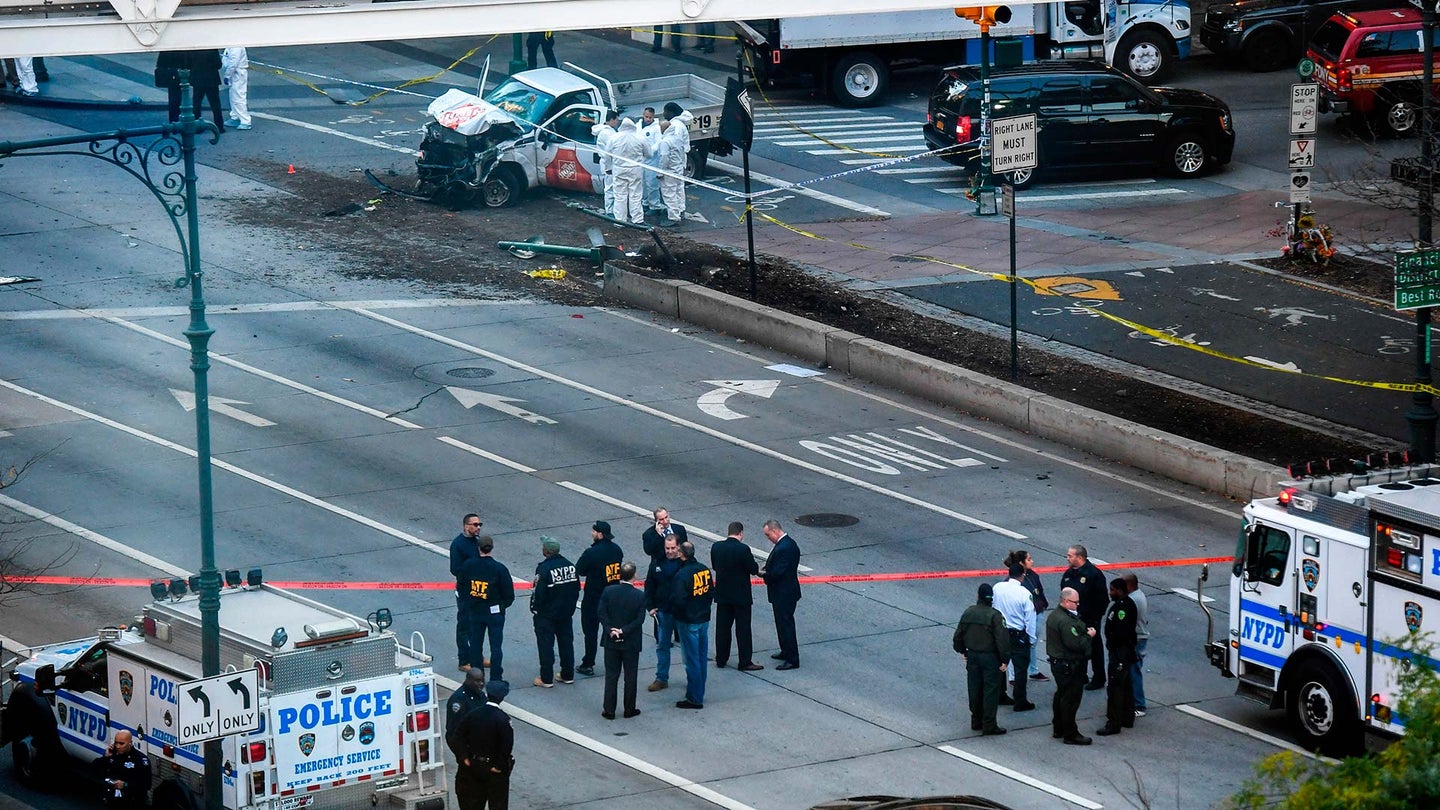Could a Simple Safety Feature Help Reduce the Destruction of Vehicular Terrorist Attacks?
While not a perfect solution, a simple software tweak could help reduce the later carnage of these increasingly common terror attacks.

That tragedy that unfolded in lower Manhattan yesterday leaves everyone upset, frustrated, scared. Angry. As the most populated city in the U.S. with countless areas of heavy pedestrian traffic, New York City is extraordinarily vulnerable to vehicle attacks.
Arguably deadlier than your average gun, a vehicle can be acquired remarkably easily and has become a preferred weapon of the modern terrorist, with recent high-profile attacks in Berlin, London, and Nice, France within the last 18 months.
Without flooding our cities and towns with barriers—which is happening more frequently, anyway—the powers-that-be need to address this epidemic of vehicle-based attacks. Aside from the oft-mentioned ballards, jersey barriers, and overpasses fencing, what's a different, out-of-the-box solution? Our proposal: adjusting vehicles' safety features.
Many manufacturers have features that increase driver safety, and even specific pedestrian-protection features like automatic braking and exterior airbags. But we're proposing a more fundamental idea: automatically locking the brakes and cutting engine power whenever an airbag goes off. Sure, in certain circumstances, mostly reminiscent of a Bond film, you may need to drive away from danger with deployed airbags—but I suspect this added feature would be far more safe on the whole. Once the brakes are locked and the engine is cut, the vehicle can no longer be used as a weapon. Of course, that means the vehicle has to have struck something already, but we're not suggesting this is a perfect fix—more of a harm-reduction strategy. As we have seen over the past year, these vehicles sustain significant damage fairly early on in the incident, yet continue a path of destruction until eventually stopped by a barrier or wall.
Again, this is not a perfect solution. But it seems like a good partial fix. Unless I'm missing something? If so, please let me know in the comments.
(The Drive would like to thank all New York City first responders for quickly controlling the situation and for preserving life to the best of their ability. Your actions are valued and you do not go unnoticed.)
